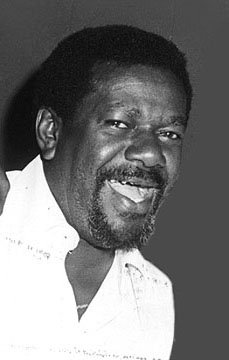Cortijo was born 11 December 1928 in Santurce (Puerto Rico). Cortijo was an important figure in the history and evolution of Latin music. He was known as a percussionist (timbales and conga), bandleader, and composer. He was a musical hero for the people of Puerto Rico and Latin America. He was admired for his talents as a talented and creative musician. He brought the plena and bomba out of the slums, along with his all-black band and introduced them to all levels of society in Puerto Rico as well as abroad. He grew up listening to the drumming and singing of pleneros such as Maria Teresa and Cornelio. He was able to make the timbas using them, the barrel drums that he used to lure Ismael Rivera into joining his descargas on the beach. These close friends shared their lives for the next 30 years. They experienced fame, drug addiction, jail, and everything in between. Cortijo was aware that there were many types of bomba cangrejera, or “crabber’s Bomba”. This background, combined with his experience from participating in traditional street carnivals such as San Mateo and San Juan that featured bombas or plenas, made Cortijo well-equipped to organize an authentic bomba/plena group. Cortijo created his own style, adding trumpets and saxophones to the mix, while keeping the tradition of bomba and plena through the strong rhythmic foundation. Cortijo wanted to allow his band to perform spontaneously, and not to follow rigid musical plans. Cortijo’s group danced on the stage and stood up. They were merely sketches that provided a framework for the musicians’ improvisations. This style was a great way to ignite the crowd and help them compete against the big bands Machito Rodriguez, Tito Puente and Tito Rodriguez. Cortijo’s music was popular throughout Latin America. Rafael answered Rafael’s question about why other countries accept music that is closely related to Puerto Rican folklore. He said that “…African drums can be understood in all regions of the globe. My music is also understood and appreciated in Haiti, for example. Because it is their music, humble people all over the world have no problem with me singing my songs. “We try to play it honestly, spontaneously and without any sophisticated variations that might alter its original form.” Cortijo began his apprenticeship playing bongos with Moncho Muley’s Conjunto Monterrey, and later joined the orchestras of Frank Madera or Miguelito Miranda. He toured the world with Daniel Santos’ band and was a radio host for Myrta Silva, a Cuban singer, and composer Myrta. He was playing congas in the Mario Roman Combo’s 1954 concert when the bandleader decided to quit. Cortijo was able to form his own group. Cortijo knew what sound he wanted, and who could produce it. Sammy Ayala was the group’s first singer. In 1955, singer Ismael rivera joined the group. Cortijo’s Combo was a real audiovisual attraction, and Puerto Rican television soon attracted them. For five years, the popular Show del Mediodia featured them Monday through Friday. The group maintained a close relationship with the island’s people through dance performances at traditional fiestas patronales (patron saint celebrations). From El Bombon de Elena, the Combo’s first hit, to the futuristic “Time Machine”, which was released in 1974. In between came many classics such as “Maquinolandera”, “Oriza”, “Perfume de Rosas”, “Tuntuneco”, “El Chivo de la Campana” and “Dejalo que Suba”. After Rivera was sentenced to prison for drug offences in 1962, the members of Rivera’s combo, which included pianist Rafael Ithier were forced to split and become El Gran Combo. Cortijo and His Combo had been separated for more than four years before they reunited to play Ismael’s Bienvenido! The album Con Todos Los Hierros was the result of another reunion. Cortijo organized Bonche, a new orchestra, and performed with them on Sorongo. His daughter Fe Cortijo was one of the singers, despite having a weak voice. Fe worked with her father until his final album. Cortijo collaborated with Kako, a Puerto Rican drummer and bandleader. He revived some of his popular bombas and plenas. Their meteoric rise was followed by years of excesses, and legal problems. Cortijo, Ismael and Rivera found Puerto Rico’s hostile environment to be too much and moved to New York. Cortijo was not at home in New York so he returned to Puerto Rico. However, his life on the island was not much better after his return. Tite Curet, a friend and financial helper, helped Cortijo to record Pa’ Los Caserios. Many of the songs were also written by Tite. Coco Records sponsored a concert in San Juan on June 25, 1974. It brought together Cortijo’s original members and his Combo. That night saw Rafael Cortijo and Ismael Riva, Roy Rosario. Martin Quinones. Rafael Ithier. Eddie Perez. Hector Santos. Mario Cora. Sammy Ayala. Roberto Roena. Miguel Cruz. Kinito Velez. Juntos Otra Veez was recorded at the concert. The album was reissued in 1982 as Ismael Rivera Sonero Numero 1 Cortijo, 54 years old, died from pancreatic cancer on October 3, 1982. Both the public and common people were proud of Cortijo’s contributions to music and culture in Puerto Rico. His lifelong friend, Ismael rivera, died five years later from heart failure. from http://www.musicofpuertorico.com
